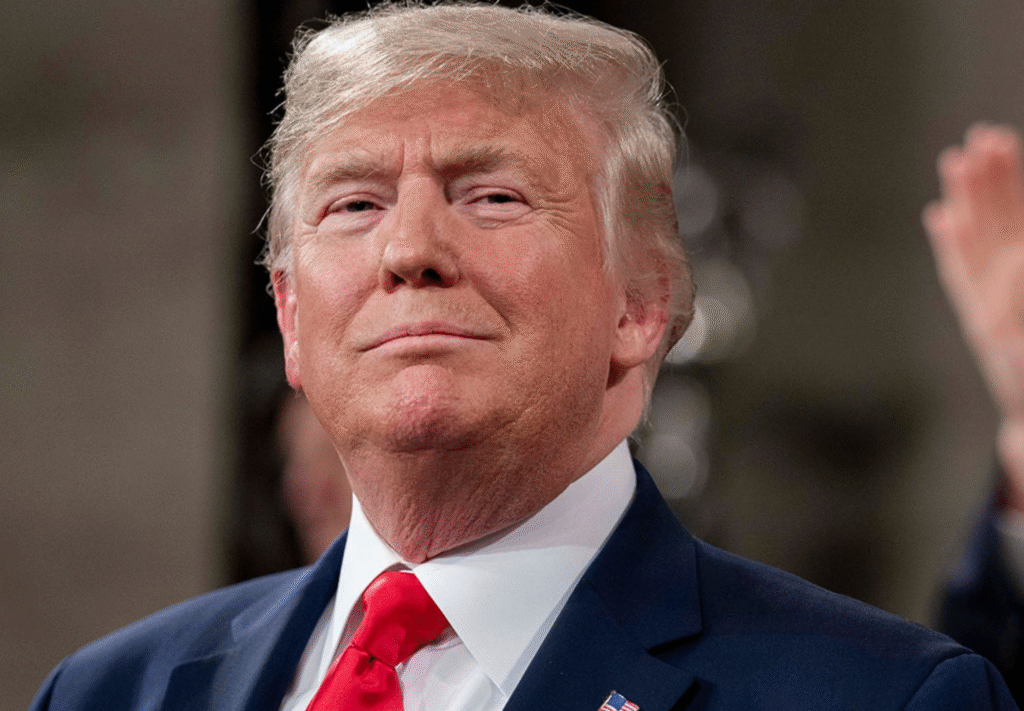World News
Symmetry raises $18M to bolster organizations’ data security programs on August 9, 2023 at 4:00 pm
As organizations embrace cloud services — and are forced to confront changing regulations and data use standards — their ability to maintain control of data security frequently becomes strained. If they lose that control, the consequences can be quite severe. The average cost of a data breach is about $3.86 million (per IBM), and most companies pay around $14.82 million per year for noncompliance, including noncompliance with data security policies.
So it doesn’t come as much of a surprise that there’s a strong, shared desire among organizations to invest in greater data security. Ninety-seven percent of security leaders believe that their employers will either maintain or increase their security budgets this year, according to one recent survey, while 45% say that data security has “significantly” increased for them as a priority.
The newfound attention on data security is benefitting startups like Symmetry Systems, which offers a platform that provides visibility into who has access to a company’s data and how it’s being used. Co-founded by Casen Hunger, Puneet Tiwari and Mohit Tiwari, a former cybersecurity researcher at the University of Texas, Austin, Symmetry maps out an organization’s data, helping to define policies for how data should — and shouldn’t — flow.
“Symmetry provides the foundational visibility to drive developers and data team processes, to detect violations and to automate large parts of compliance reporting,” Tiwari told TechCrunch via email. “The platform not only grants deep visibility into the security posture of the data layer, it enables the management of the data permission structure to resolve gaps and identify lapses in access — allowing human analysts and leadership to focus on more pressing issues.”
Certainly, there’s evidence that organizations struggle with data management. In a 2022 survey conducted by PulseMeter and Orca Security, 35% of companies said that their sensitive data now resides in the cloud while 27% admitted to not knowing the location of their sensitive data.
Symmetry, running in an organization’s cloud or clouds, tries to solve for this — identifying data types in data stores and unearthing possible misconfigurations related to data and user accounts. Using Symmetry, customers can adjust account access management policies on individual data objects, ensuring access is limited to those who need it and monitoring all future accesses.
“Symmetry pioneered the ‘software-as-a-service, but in customer’s cloud’- deployment model in cloud data security,” Tiwari said. “The entire product resides in the customer’s environment while being updated and managed using cloud-native computing foundation tooling that’s more typically associated with classic software-as-a-service products.”
Symmetry competes with data security companies like Rubrik-owned Laminar, Open Raven, IBM’s Polar, Normalyze, Cyera, Theom and Dig as well as cloud security and privacy vendors (see Wiz, Orca, Palo Alto Networks, Securiti, BigID and OneTrust) offering data security management products.
To attempt to differentiate itself, Symmetry is developing a large language model along the lines of OpenAI’s ChatGPT that’ll allow customers to talk through, in plain English, things like what data and which actions create a security or compliance risk and what steps can mitigate any data risk.
That’s perhaps what attracted investors to the startup. Symmetry today announced that it raised $18 million in a funding round led by OVN Capital with participation from Adit Capital, TSG and Forgepoint Capital, bringing the company’s total raised to $36 million.
“We’re building a new category of AI-enabled workflows for security and compliance in order to specifically side-step the pitfalls of overfitted AI models that end up effectively being a ‘rules engine’ with another name,’” Tiwari said.
Symmetry’s mum where it concerns specific revenue figures and customers; Tiwari declined to name any client names when asked. But Tiwari says that it’s building a “robust” federal sales program. The San Francisco-based startup employs a workforce of around 40 today, and expects to have 50 to 55 on the payroll by the end of the year.
“The latest investment will be used to scale out Symmetry’s channel partnerships, offer a starter visibility product that clearly shows how a data-to-identity abstraction is a major leap from messy infrastructure details, and build out the second phase of cloud data security — i.e., autonomous response to threat-detections and policy-violations,” Tiwari said. “Our customers have to move to the cloud, meet increased regulations and quickly use AI and data lakes. All of these are tailwinds for us … Overall, we see money from infrastructure security being reallocated towards data security.”
As organizations embrace cloud services — and are forced to confront changing regulations and data use standards — their ability to maintain control of data security frequently becomes strained. If they lose that control, the consequences can be quite severe. The average cost of a data breach is about $3.86 million (per IBM), and most
News
US May Completely Cut Income Tax Due to Tariff Revenue

President Donald Trump says the United States might one day get rid of federal income tax because of money the government collects from tariffs on imported goods. Tariffs are extra taxes the U.S. puts on products that come from other countries.

What Trump Is Saying
Trump has said that tariff money could become so large that it might allow the government to cut income taxes “almost completely.” He has also talked about possibly phasing out income tax over the next few years if tariff money keeps going up.
How Taxes Work Now
Right now, the federal government gets much more money from income taxes than from tariffs. Income taxes bring in trillions of dollars each year, while tariffs bring in only a small part of that total. Because of this gap, experts say tariffs would need to grow by many times to replace income tax money.
Questions From Experts
Many economists and tax experts doubt that tariffs alone could pay for the whole federal budget. They warn that very high tariffs could make many imported goods more expensive for shoppers in the United States. This could hit lower- and middle‑income families hardest, because they spend a big share of their money on everyday items.
What Congress Must Do
The president can change some tariffs, but only Congress can change or end the federal income tax. That means any real plan to remove income tax would need new laws passed by both the House of Representatives and the Senate. So far, there is no detailed law or full budget plan on this idea.

What It Means Right Now
For now, Trump’s comments are a proposal, not a change in the law. People and businesses still have to pay federal income tax under the current rules. The debate over using tariffs instead of income taxes is likely to continue among lawmakers, experts, and voters.
News
Epstein Files to Be Declassified After Trump Order

Former President Donald Trump has signed an executive order directing federal agencies to declassify all government files related to Jeffrey Epstein, the disgraced financier whose death in 2019 continues to fuel controversy and speculation.
The order, signed Wednesday at Trump’s Mar-a-Lago estate, instructs the FBI, Department of Justice, and intelligence agencies to release documents detailing Epstein’s network, finances, and alleged connections to high-profile figures. Trump described the move as “a step toward transparency and public trust,” promising that no names would be shielded from scrutiny.
“This information belongs to the American people,” Trump said in a televised statement. “For too long, powerful interests have tried to bury the truth. That ends now.”
U.S. intelligence officials confirmed that preparations for the release are already underway. According to sources familiar with the process, the first batch of documents is expected to be made public within the next 30 days, with additional releases scheduled over several months.
Reactions poured in across the political spectrum. Supporters praised the decision as a bold act of accountability, while critics alleged it was politically motivated, timed to draw attention during a volatile election season. Civil rights advocates, meanwhile, emphasized caution, warning that some records could expose private victims or ongoing legal matters.
The Epstein case, which implicated figures in politics, business, and entertainment, remains one of the most talked-about scandals of the past decade. Epstein’s connections to influential individuals—including politicians, royals, and executives—have long sparked speculation about the extent of his operations and who may have been involved.

Former federal prosecutor Lauren Fields said the release could mark a turning point in public discourse surrounding government transparency. “Regardless of political stance, this declassification has the potential to reshape how Americans view power and accountability,” Fields noted.
Officials say redactions may still occur to protect sensitive intelligence or personal information, but the intent is a near-complete disclosure. For years, critics of the government’s handling of Epstein’s case have accused agencies of concealing evidence or shielding elites from exposure. Trump’s order promises to change that narrative.
As anticipation builds, journalists, legal analysts, and online commentators are preparing for what could be one of the most consequential information releases in recent history.
Politics
Netanyahu’s UN Speech Triggers Diplomatic Walkouts and Mass Protests

What Happened at the United Nations
On Friday, Israeli Prime Minister Benjamin Netanyahu addressed the United Nations General Assembly in New York City, defending Israel’s ongoing military operations in Gaza. As he spoke, more than 100 delegates from over 50 countries stood up and left the chamber—a rare and significant diplomatic walkout. Outside the UN, thousands of protesters gathered to voice opposition to Netanyahu’s policies and call for accountability, including some who labeled him a war criminal. The protest included activists from Palestinian and Jewish groups, along with international allies.

Why Did Delegates and Protesters Walk Out?
The walkouts and protests were a response to Israel’s continued offensive in Gaza, which has resulted in widespread destruction and a significant humanitarian crisis. Many countries and individuals have accused Israel of excessive use of force, and some international prosecutors have suggested Netanyahu should face investigation by the International Criminal Court for war crimes, including claims that starvation was used as a weapon against civilians. At the same time, a record number of nations—over 150—recently recognized the State of Palestine, leaving the United States as the only permanent UN Security Council member not to join them.
International Reaction and Significance
The diplomatic walkouts and street protests demonstrate increasing global concern over the situation in Gaza and growing support for Palestinian statehood. Several world leaders, including Colombia’s President Gustavo Petro, showed visible solidarity with protesters. Petro called for international intervention and, controversially, for US troops not to follow orders he viewed as supporting ongoing conflict. The US later revoked Petro’s visa over his role in the protests, which he argued was evidence of a declining respect for international law.

Why Is This News Important?
The Gaza conflict is one of the world’s most contentious and closely-watched issues. It has drawn strong feelings and differing opinions from governments, activists, and ordinary people worldwide. The United Nations, as an international organization focused on peace and human rights, is a key arena for these debates. The events surrounding Netanyahu’s speech show that many nations and voices are urging new action—from recognition of Palestinian rights to calls for sanctions against Israel—while discussion and disagreement over the best path forward continue.
This episode at the UN highlights how international diplomacy, public protests, and official policy are all intersecting in real time as the search for solutions to the Israeli-Palestinian conflict remains urgent and unresolved.

 Entertainment4 weeks ago
Entertainment4 weeks agoColombia’s ‘Doll’ Arrest: Police Say a 23-Year-Old Orchestrated Hits, Including Her Ex’s Murder

 Entertainment4 weeks ago
Entertainment4 weeks agoHow The Grinch Became The Richest Christmas Movie Ever

 Entertainment4 weeks ago
Entertainment4 weeks agoMiley Cyrus Is Engaged to Maxx Morando

 Film Industry3 weeks ago
Film Industry3 weeks agoDisney Brings Beloved Characters to ChatGPT After $1 Billion OpenAI Deal

 Business4 weeks ago
Business4 weeks agoLuana Lopes Lara: How a 29‑Year‑Old Became the Youngest Self‑Made Woman Billionaire

 Entertainment4 weeks ago
Entertainment4 weeks agoMariah Carey’s One Holiday Hit Pays her $3.3 Million a Year

 Film Industry3 weeks ago
Film Industry3 weeks agoNetflix Got Outbid: Paramount Drops a $108 Billion Cash Bomb on Warner Bros.

 Entertainment4 weeks ago
Entertainment4 weeks agoAnne Hathaway Just Turned Her Instagram Bio Into a 2026 Release Calendar




























